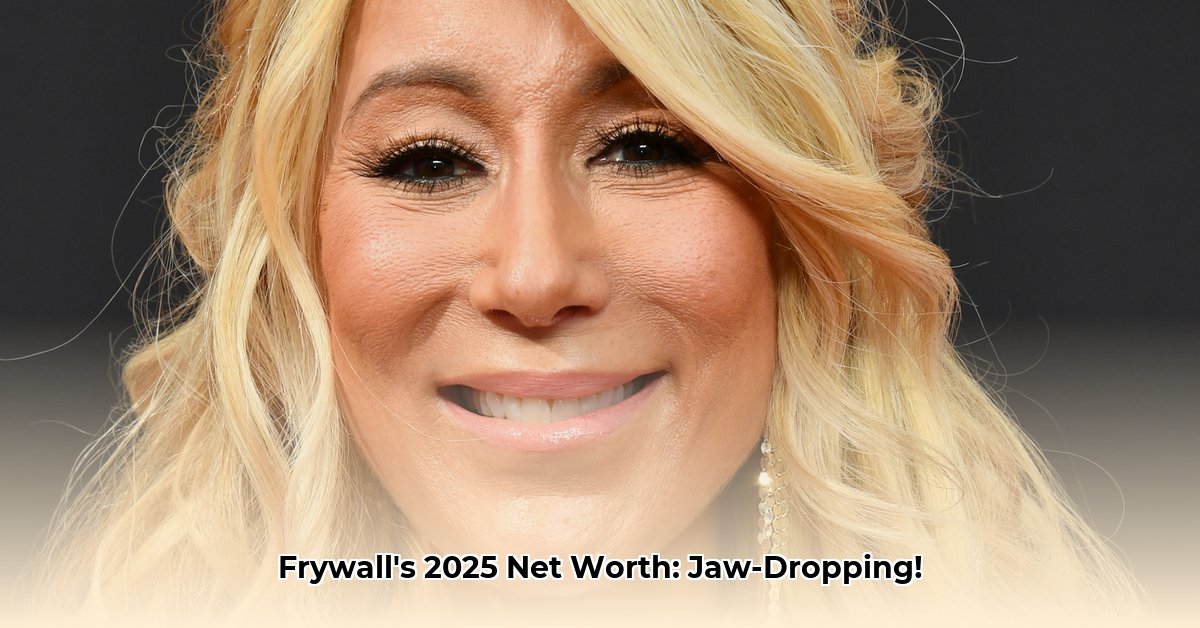
Frywall, the seemingly simple silicone splatter screen, has become a surprising success story. Its journey, marked by a potentially ambiguous Shark Tank deal and a surge in sales, offers valuable insights into navigating the unpredictable waters of entrepreneurship. While precise financial figures remain elusive, the company's trajectory reveals a compelling tale of rapid growth, strategic maneuvering, and the challenges of scaling a successful product.
The Frywall Origin Story: From Kitchen Problem to Product Innovation
Before the bright lights of Shark Tank, Frywall was a solution to a common kitchen frustration: the relentless splatter of hot oil. Its founders, recognizing this unmet need, ingeniously designed a silicone screen that integrated directly into cooking pans. This simple yet effective design differentiated Frywall from clunky, easily-toppled competitors, providing a solution that was both practical and aesthetically pleasing. This innovative approach laid the groundwork for their subsequent success.
The Shark Tank Crucible: A Deal in Question
Frywall's appearance on Shark Tank generated significant buzz, catapulting the product into the national spotlight. However, the narrative surrounding the proposed deal with Lori Greiner remains somewhat hazy. While reports conflict, the show undeniably provided invaluable brand exposure, regardless of the deal's ultimate outcome. This exposure opened doors that would have otherwise remained closed, laying the foundation for significant future growth.
Did the deal solidify? The answer remains unclear, adding a layer of intrigue to their post-Shark Tank trajectory. But one thing's certain: the appearance alone profoundly impacted Frywall's visibility.
Post-Shark Tank Growth: A Rollercoaster of Success
The numbers following Frywall's Shark Tank appearance are impressive, though precise figures remain difficult to confirm due to the company's private status. Early reports suggest that sales rocketed to $800,000 within the first year, a considerable achievement for a relatively niche product. Other estimations even place the company's net worth well beyond $1.5 million by 2024 and project similar revenue numbers for that year. These figures, despite varying degrees of certainty, indicate a remarkable post-Shark Tank trajectory. This impressive sales growth underscores the effectiveness of their product, marketing, and distribution strategies. But how sustainable is this explosive growth?
Unpacking the Financials: Navigating the Ambiguity
The lack of complete transparency regarding Frywall's financials adds a layer of complexity to analyzing its success. The uncertain status of the Lori Greiner deal is a prime example of the data gaps frequently encountered when evaluating privately held companies. It's crucial to acknowledge these information limitations while interpreting the available data. This opacity underscores the challenges inherent in accurately assessing the financial health of a fast-growing, private entity. A more comprehensive financial landscape would require greater public disclosure from the company itself.
Future Projections: Risks, Opportunities, and Strategic Maneuvers
Frywall faces both opportunities and challenges. Increased competition in the vibrant kitchen gadget sector is a significant risk. Supply chain disruptions, a persistent threat in recent years, could impact production and sales. Even negative customer reviews, although seemingly infrequent, could erode brand reputation. Securing additional funding for expansion will also prove crucial for sustaining the company's rapid growth.
However, there's evidence that Frywall is proactively addressing these risks: by continuously innovating, expanding into new product niches, and focusing on exceptional customer service. Their future success will hinge on their ability to adapt to market changes and maintain brand loyalty.
Actionable Insights for Stakeholders: A Strategic Roadmap
For Frywall, its retail partners, and potential investors, clear strategic frameworks are essential for long-term success. Below, we outline short-term and long-term strategies tailored around the specifics of each group:
Frywall Management: Prioritize product diversification, bolster online presence, explore strategic partnerships, and consider international expansion.
Retail Partners: Optimize inventory management, enhance in-store marketing, and collaborate on promotional deals to increase sales.
Potential Investors: Thoroughly assess the competitive landscape, review sales data, and carefully evaluate the potential implications of the Lori Greiner deal ambiguity before investing.
A Risk Assessment Framework: Navigating Uncertainties
Predicting the future with absolute certainty is impossible. Nonetheless, a structured risk assessment allows for a more informed outlook:
| Risk Factor | Likelihood | Impact | Mitigation Strategy |
|---|---|---|---|
| Increased Competition | High | High | Continuous product innovation, targeted marketing, brand loyalty building |
| Supply Chain Disruptions | Medium | High | Diversify suppliers, secure long-term contracts |
| Negative Customer Reviews | Low | Medium | Proactive customer service, swift issue resolution |
| Funding Challenges | Medium | High | Robust financial planning, diverse funding exploration |
| Market Saturation | Medium | Medium | Product line expansion, international market diversification |
The future of Frywall holds immense potential, but success requires a proactive approach to risk management, a commitment to innovation, and a strategic understanding of the competitive landscape.
Conclusion: Lessons in Entrepreneurial Success and Resilience
Frywall's story is far from over. While the initial trajectory suggests impressive growth, the inherent uncertainties of a dynamic market must not be overlooked. The company's success will continue to depend on smart decision-making, adept financial management, and the capacity to adapt to market shifts. The ultimate net worth in 2025 remains unknown, but Frywall's journey thus far offers a compelling case study in entrepreneurial resilience and strategic adaptability.